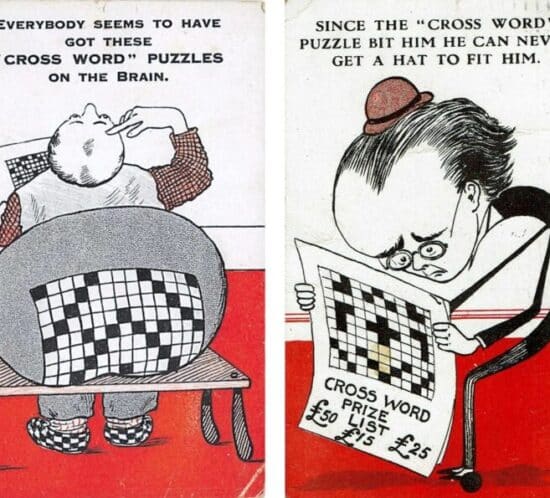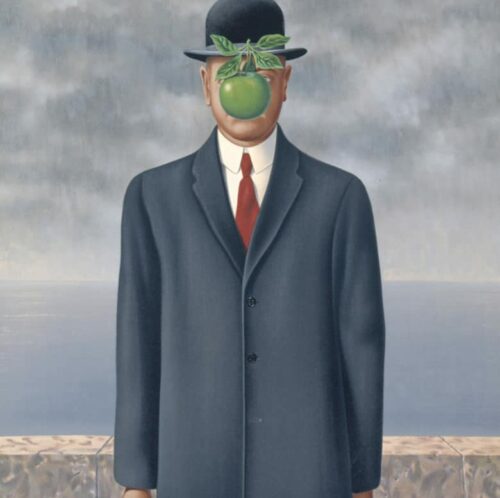Searching for the Right Words: You, Too, Can Write a Sympathy Card
The number of those jumping a plane for a far-off continent, rather than just write the sympathy card, is anyone’s guess. Tasks that come readily to those who enjoy tooling around with the written word may be terrifying and paralyzing to those who … don’t.
Lots of people suffer quietly from “sympathy anxiety.” They freeze in place as they think, “I might say something that, God forbid, worsens their pain! I’d best say nothing.”
And, likely, even more people suffer from writing anxiety — about writing just about anything. They tell themselves, “Maybe she’ll understand I’m just not a writer, or not the kind of person who knows what to say, even on happy occasions. Maybe it’ll be okay if I just re-emerge once she doesn’t need me to say something wise or comforting.”
By the time you multiple your sympathy and writing anxieties against each other, you’re up a tree, crouched in a nook with your pant hems higher than the tops of your socks.
Me, I like to write. I don’t do it quickly, perhaps because I get hamstrung by some weird concept of perfectionism. Maybe it’s that same perfectionism that, for you, keeps you from writing at all.
So, I’ll tell you what I tell myself.
Get over it.
The person in mourning really isn’t looking at you. And they’re not depending on your note to get them over the entire hump of their grief, just to acknowledge the weight of this loss with some sacrifice of time and heart of your own.
So I thought I’d offer, for anyone who struggles for any reason with this, some ideas that might help when you need and want to bring comfort on paper to those you care about at an impossibly hard time in their lives.
Because the momentousness of their loss is worth your sitting with it, too.
Why the actual note
When people are in the early phase of grief, the big thing they’re missing is so obvious we can overlook it. It is the physical presence of the one they love. Grievers are suddenly landed in a new reality, one in which they can’t:
- hear in real time the voice that somehow always implied a smile;
- hold the arthritic hand whose miraculous smoothness they always marveled at underneath their caress; or
- rest their head in the doughy lap of a grandparent munching microwave popcorn over them without regard for what gets into their hair.
They miss the physicality, the embodiedness of the one they love.
How about I start with a text? ...
A text or email are way better than nothing, and are useful to get word quickly to someone once you hear of a death.
But please don’t leave it at that! Again, you’ll miss an important opportunity to “re-presence” the person who died in a way that only something put to paper seems to do. If you want to bring as much comfort as you can to others who are ripped open by grief, write by hand.
Like the loved one herself had been, a card or personal letter is physical. It has heft, sound, tactility.
When you recall how their mother’s heel always hit the step up as she came in from the garage, and you listened for it, even as you were rehearsing in the makeshift band studio their house had back in high school, your letter rustles.
When, grinning, you bring to mind their stories of how their best work friend’s shirt always popped the same button without his knowing, your letter has weight in the hand, fragility, texture.
Like the hundreds or thousands of times they saw the one they cared about, they can return to your card over and over again during the early days, weeks, and months of loss for fresh portions of comfort. Your note has presence.
Many people don’t like sharing their handwriting, just like they don’t like taking their socks off in a workshop. It’s just a little personal. But the person who grieves is in that raw state — where the mythical perfection of your vanity just doesn’t matter. And when you share your cryptic or embarrassingly childlike handwriting, you’re entering into the intimate experience of grief.
Finally, some tips
One of the things that, I would guess, make writers good sympathy card authors is something that’s available to everyone. They notice things and they’re not afraid to write about what they notice. All of this takes place before ever putting ink to paper.
How did the man’s wife always slip away from the table when the conversation turned to something that interested her less?
What adjectives did the young girl seem so often to use when she described her grandfather to you?
How did the man and his dad spend their time together, even if you know about it solely from stories over drinks?
Just by noting the habitual, you’re re-summoning the life of the person who died, bringing to mind memories that re-conjure and comfort.
- The person who died had qualities that appeared over and over again, that were part of their character.
- They did certain things over and over again, that became habits or gestures.
- They enjoyed certain things repeatedly, becoming part of the trail of love with which they honored the world.
Giving words to the habitual is a deep way of re-presencing the one who left.
Consider including:
- Words that give a feeling for the legacy of the person – a memory that will stay with you, or, if you didn’t know the person, a sense of their legacy as it lives on in the person grieving.
- A sense of the enduring or eternal qualities the person represents for you (e.g., thinking of others first, doing the honorable thing, making the most of any situation, ensuring that everyone felt welcome).
- Your wishes for comfort, peace, the resolution of difficult feelings in time (if you were close to the person experiencing the loss), while recognizing that all of these things will take real time.
- Subsequent cards or notes, sent awhile after the initial one. Grief carries on. It will be something very special for the griever if you observe the anniversary of their loved one’s death. But you don’t have to wait that long either. Most of the attention mourners get is in the first month after a loss. Grief resolves way after that. Stay with the person as grief continues to be the big thing in their lives. Let them know they continue to be in your thoughts.
And remember, you don’t have to wait until their person dies! When you know the person is seriously ill, you can send notes of strength and reminders to take care. Anticipatory grief is a “thing.”
The best sympathy cards reflect:
- Your having sprung into action: not waiting to write once you hear the news.
- Your having, at the same time, slowed down once you began to write so that you have sat with the person who died, the griever, and yourself. Bring all of them into your heart. DWELL with them. See what comes up. Keep the writing, though, off yourself, and your own experiences with grief.
- Sensory descriptions of the qualities you associate with the person who died that truly distinguish them from others. Sometimes a subset of the quality works better than the big category. Kindness? (Readiness to take others under their wing without lording it over them.) Sense of humor? (Punning.) Love for animals? (That time he gently squeezed the bunny to the other side of the chain-link fence when an enthusiastic Labrador Retriever frightened him into it.)
- Your sticking with it.
I didn’t make it easy for you, did I? It’s not supposed to be easy. Just know your note will always be remembered as a true gift of your heart at a time of real need in someone else’s.
Related Posts
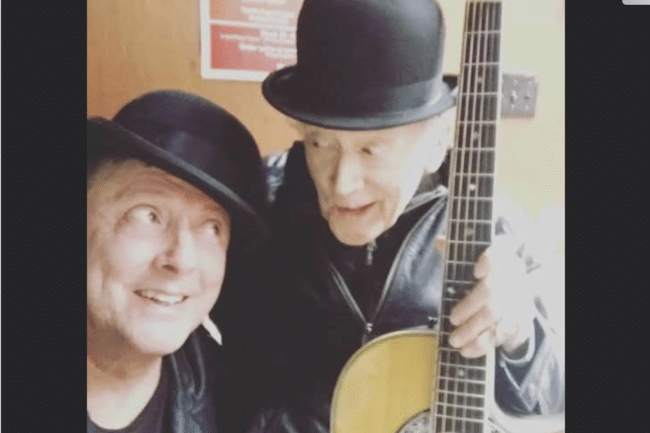
The Incredible Will to Sing
The will to make it to a loved one’s graduation or wedding, or to the birth of a new baby, somehow compels the body to obey the will. Stu Klitsner was going to sing at his only granddaughter’s wedding, come hell or high water.

The Chaplain’s Feet
Chaplains exercise their humanness with every patient or family member they meet. What are the parallels between the kind of presence chaplains bring in the spiritual realm and that of the dancer who sees her choreography and performance as a kind of chaplaincy?

Whacking a Gun
At the 2023 Parliament of the World’s Religions, blacksmiths from RAWTools demonstrated how they took guns that had been surrendered from a variety of sources and re-formed them into garden hand tools, making literal their mission and message of anti-violence. The organization takes literally the passage from the Book of Isaiah to “beat their swords into plowshares and their spears into pruning hooks.”
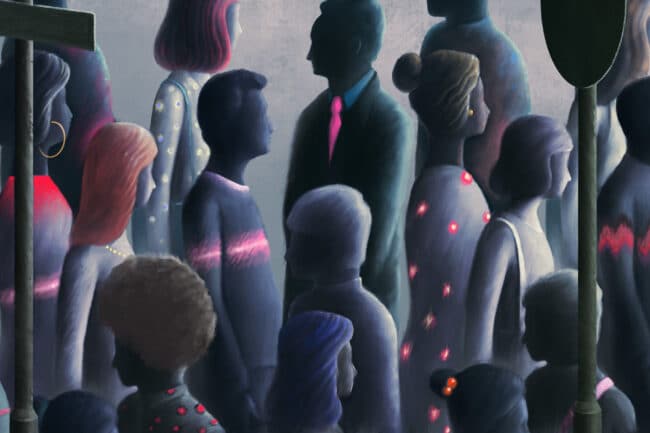
A Vaccine for Loneliness?
Public health has gotten bigger and bigger in recent decades. What was only thought of in the past as individual choices, like drug addiction, gun violence, or smoking crossed over to be thought of by many as social issues and, eventually, as matters of public health. With the Surgeon General’s report that came out in May, 2023, loneliness and isolation may assume their place alongside them as social epidemics.

Grief on the Comedy Stage
Is it in supremely bad taste, or potentially healing in a social setting, to use death and dying as material on the American comedy stage? The post-pandemic fad of comedy shows that deal with what have been taboo topics is currently walking that line.
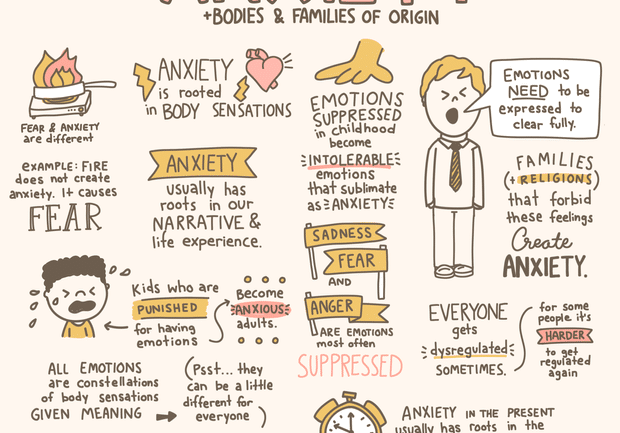
If You’re a Pro, You Gotta Have a Pro
Lindsay Braman’s example can open your mind about what sorts of both joy and utility you can create, simply by letting your own gifts out of the closet and using them in your work, in recognizing that, if a therapist/doodler can connect two passions, so can you.

